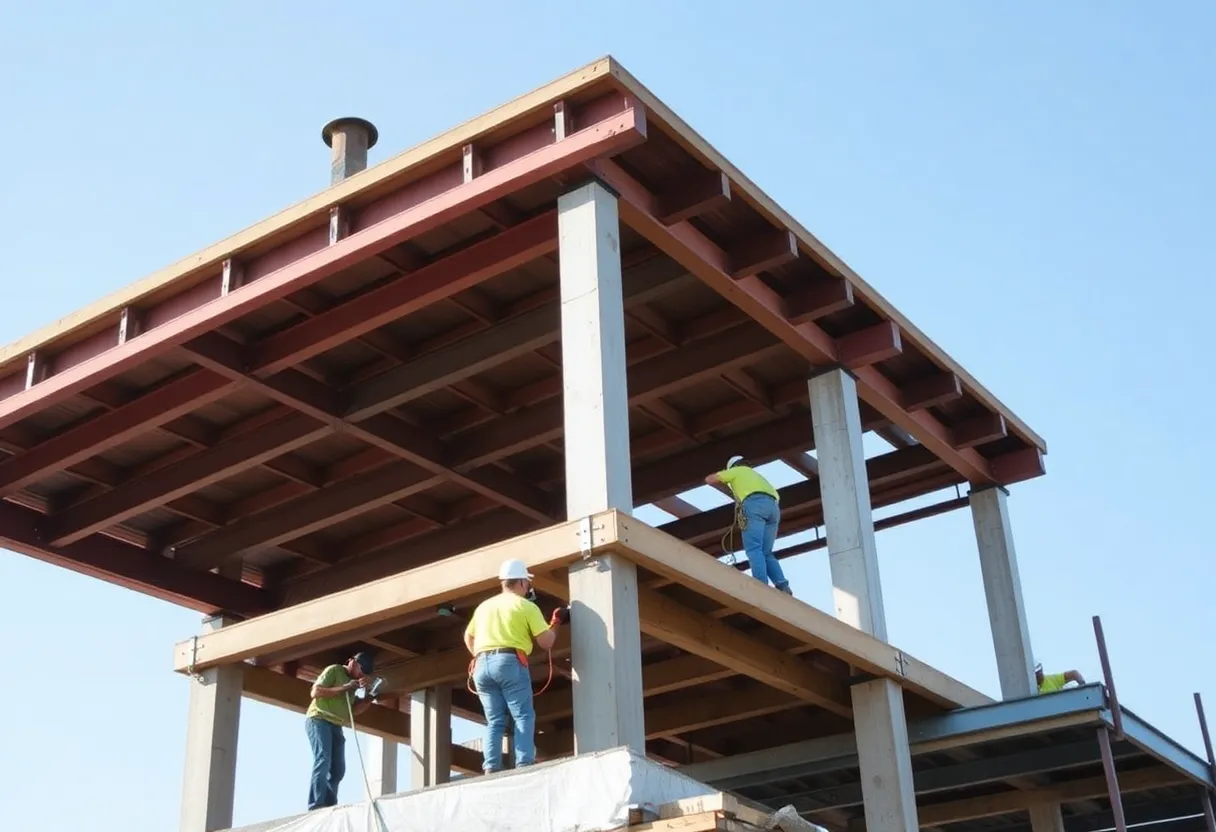News Summary
The Federal Reserve’s latest report indicates that the Construction & Engineering sector has shown significant growth, outperforming slower industrial sectors. Fueled by government spending, particularly in infrastructure, the sector has benefitted from a 0.3% rise in the Construction Supplies index and a notable 3% annual growth in civil engineering. However, defensive sectors like utilities lag behind. Despite challenges such as labor shortages and tariff impacts on materials, ongoing investments from the Infrastructure Investment and Jobs Act are expected to provide sustained momentum for the sector’s growth.
Federal Reserve’s Q2 2025 Report Highlights Growth in Construction and Engineering Sector
In the latest report released by the Federal Reserve on industrial production for Q2 2025, the Construction & Engineering (C&E) sector has exhibited significant resilience and growth, bucking the trend of slower performance seen in other industrial sectors. Overall industrial output showed a modest increase of 0.3% in June 2025, reflecting a mixed bag of economic performance across various industries.
Construction Sector Surpasses Expectations
Fueled by government stimulus and a surge in infrastructure spending, the C&E sector outperformed expectations. The Construction Supplies index saw a rise of 0.3%, while the civil engineering sub-sector experienced a remarkable annual growth rate of 3%. This increase highlights the ongoing investment in public works, especially in key areas such as road repairs and renewable energy projects.
Weak Performance in Defensive Sectors
On the flip side, defensive sectors like utilities and consumer staples have not fared as well, with both sectors lagging behind their industrial peers. Specifically, the manufacturing outputs for categories like Electrical Equipment and Motor Vehicles reported declines of -2.5% and -2.6% respectively, contributing to a broader slowdown in manufacturing activities.
Mining Capacity Utilization and Tariff Impacts
Capacity utilization in mining, essential for supplying materials necessary for construction, reached an impressive 90.6%. In contrast, the utility sector languished at 70.1%, a level that falls below long-term averages. Meanwhile, the nonresidential construction index (NRCI) suffered a 24% drop in Q2, primarily due to delays from tariffs on steel and rare earth elements, complicating supply chains and increasing overall costs.
Infrastructure Investment Driving Growth
The Infrastructure Investment and Jobs Act (IIJA), with its massive $1.2 trillion allocation, has been a game changer for the C&E sector. Although a substantial part of this funding remains unspent, it is giving a solid boost to civil engineering activities. The ongoing funding is projected to support growth, particularly in construction areas such as data centers and semiconductor plants, benefitting from the substantial $200 billion earmarked for these initiatives.
Labor Shortages and Innovations
Despite the positive growth indicators, the construction sector is grappling with labor shortages. To combat these challenges, firms are increasingly adopting modern construction methods like prefabrication and Building Information Modeling (BIM). These innovations are aimed at improving efficiency and productivity, helping to mitigate the impacts of workforce scarcity.
Investment Strategies Amid Economic Disparities
As the construction and engineering sector continues to thrive, financial strategies are being recommended to favor C&E stocks. Investors are advised to prioritize businesses involved in civil engineering and infrastructure while reducing their exposure to underperforming defensive sectors. Furthermore, careful monitoring of labor and tariff-related risks is crucial, urging a preference for companies with diversified supply chains and ties to educational initiatives.
Conclusion: A Bright Outlook for the C&E Sector
The growth outlook for the C&E sector appears robust, thanks to bipartisan support for infrastructure spending and technological advancements. As the economy remains uneven, it is essential for investors to consult with financial advisors before adjusting their portfolios, given the complex market dynamics and ongoing risks.
Deeper Dive: News & Info About This Topic
Additional Resources
- Ainvest: Industrial Surge Signals Strategic Shift
- Wikipedia: Construction Industry
- Oxford Economics: Global Construction Outlook Q2 2025
- Google Search: Construction Industry Trends
- OpenPR: Global Civil Engineering Market Size 2025
- Encyclopedia Britannica: Civil Engineering
- Exploding Topics: Construction Industry Trends
- Google News: Civil Engineering 2025
- Morgan Lewis: UK Civil Engineering Market Under CMA Scrutiny
- Google Scholar: Engineering and Construction Industry Outlook
- PwC: Engineering & Construction Deals Outlook
Author: Construction FL News
The FLORIDA STAFF WRITER represents the experienced team at constructionflnews.com, your go-to source for actionable local news and information in Florida and beyond. Specializing in "news you can use," we cover essential topics like product reviews for personal and business needs, local business directories, politics, real estate trends, neighborhood insights, and state news affecting the area—with deep expertise drawn from years of dedicated reporting and strong community input, including local press releases and business updates. We deliver top reporting on high-value events such as the Florida Build Expo, major infrastructure projects, and advancements in construction technology showcases. Our coverage extends to key organizations like the Associated Builders and Contractors of Florida and the Florida Home Builders Association, plus leading businesses in construction and legal services that power the local economy such as CMiC Global and Shutts & Bowen LLP. As part of the broader network, including constructioncanews.com, constructionnynews.com, and constructiontxnews.com, we provide comprehensive, credible insights into the dynamic construction landscape across multiple states.





